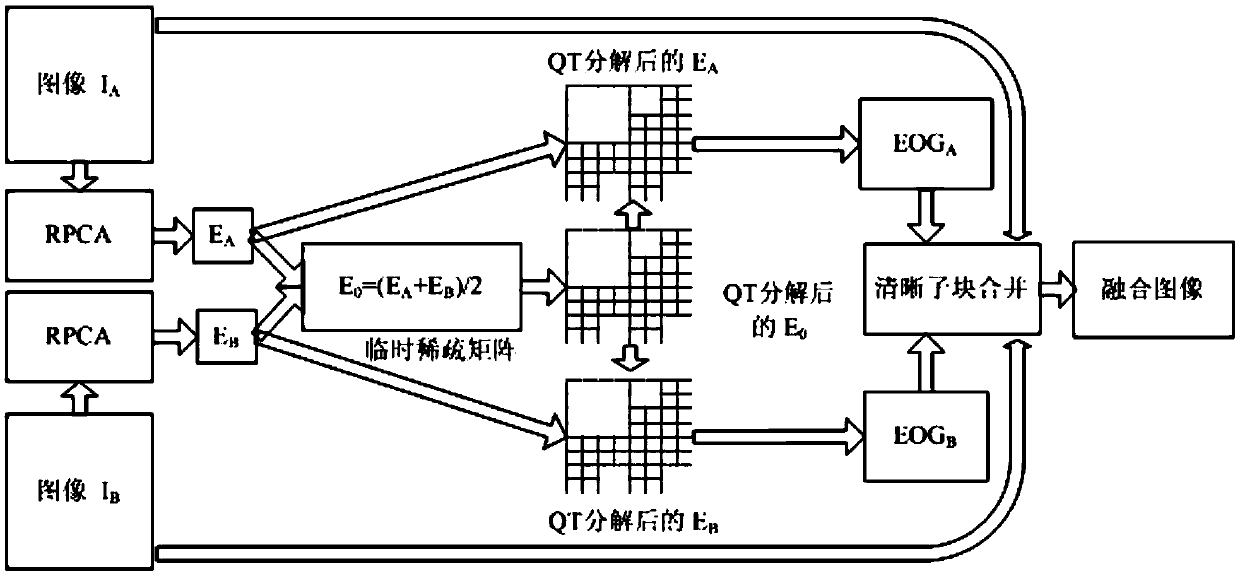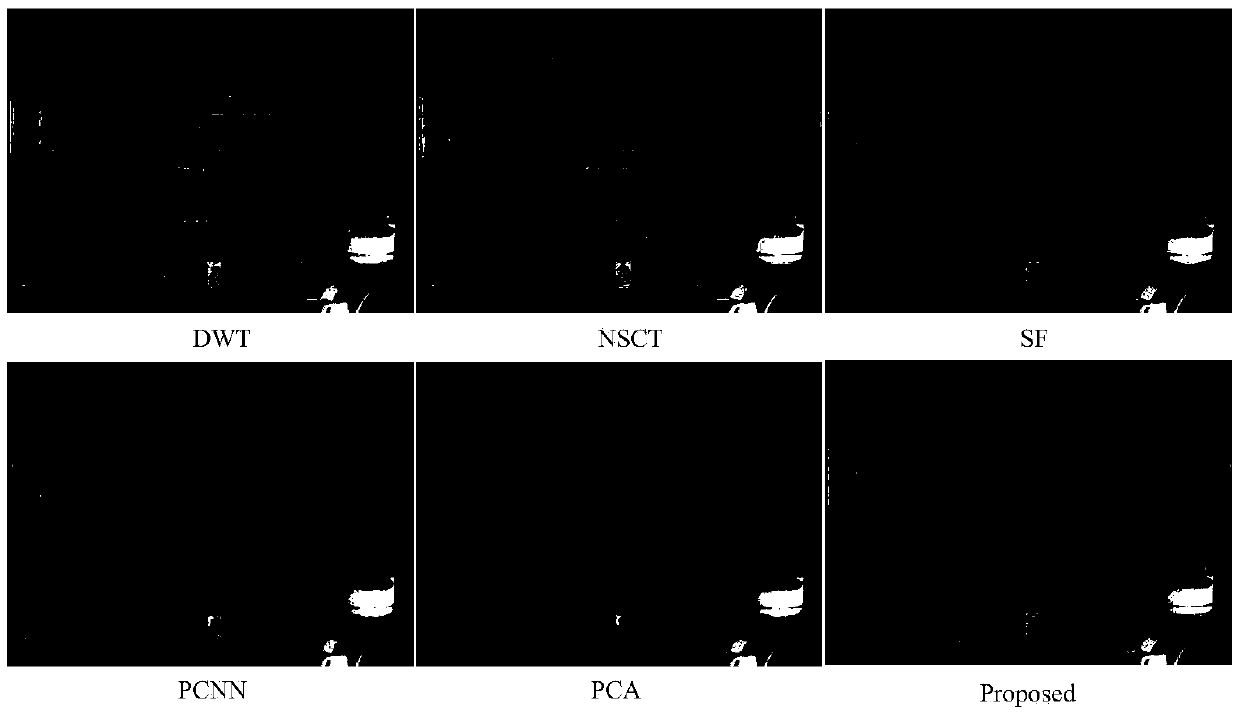A multi-focus image fusion method
A multi-focus image and image fusion technology, which is applied in the field of multi-focus image fusion, can solve the problems of image block size fusion image block effect and unsatisfactory fusion effect, etc., to suppress the block effect, improve the quality of the fusion image, and achieve high recognition. The effect of accuracy
- Summary
- Abstract
- Description
- Claims
- Application Information
AI Technical Summary
Problems solved by technology
Method used
Image
Examples
Embodiment 1
[0054] Following the technical scheme of the present invention, this embodiment is figure 2 The two source images shown in (a) and (b) are fused, and the processing results are as follows image 3 shown. At the same time, five image fusion methods, wavelet transform (DWT), non-subsampling-based contourlet transform (NSCT), principal component analysis (PCA), spatial frequency (SF), and pulse-coupled neural network (PCNN), are used to process images. figure 2 The two source images shown in (a) and (b) are fused, and the result is as follows image 3 As shown, the quality evaluation of the fused images of different fusion methods is carried out, and the results shown in Table 1 are obtained through processing and calculation.
[0055] Table 1 Multi-focus image 'rose' fusion image quality evaluation.
[0056]
Embodiment 2
[0058] Following the technical scheme of the present invention, this embodiment is figure 2 The two source images shown in (c) and (d) are fused, and the processing results are as follows Figure 5 shown.
[0059] At the same time, five image fusion methods, wavelet transform (DWT), non-subsampling-based contourlet transform (NSCT), principal component analysis (PCA), spatial frequency (SF), and pulse-coupled neural network (PCNN), are used to process images. figure 2 The two source images (c) and (d) shown in the fusion process, the result is as follows Figure 5 shown, yes Figure 5 The quality of the fused images of different fusion methods is evaluated, and the results shown in Table 2 are processed and calculated.
[0060] Table 2 Multi-focus image 'lab' fusion image quality evaluation.
[0061]
[0062] In Table 1 and Table 2: Method represents the method; the fusion method includes five types: wavelet transform (DWT), non-subsampling-based contourlet transform ...
PUM
 Login to View More
Login to View More Abstract
Description
Claims
Application Information
 Login to View More
Login to View More - R&D
- Intellectual Property
- Life Sciences
- Materials
- Tech Scout
- Unparalleled Data Quality
- Higher Quality Content
- 60% Fewer Hallucinations
Browse by: Latest US Patents, China's latest patents, Technical Efficacy Thesaurus, Application Domain, Technology Topic, Popular Technical Reports.
© 2025 PatSnap. All rights reserved.Legal|Privacy policy|Modern Slavery Act Transparency Statement|Sitemap|About US| Contact US: help@patsnap.com



